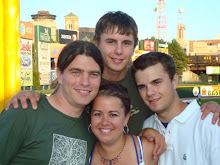- C- continuous: dialysis solution is always inside the “belly” cleansing the blood in a continuous manner.
- A- ambulatory: ambulatory means that between exchanges, you can move about freely and continue normal activities like going for a drive, walking, studying, sleeping or purse shopping.
- P- peritoneal: this type of dialysis makes use of the peritoneal membrane that covers the peritoneal cavity in order to cleanse the blood of waste products and water.
- D- dialysis: dialysis is the process of removing all wastes and excess water from the blood, in PD using the peritoneal membrane as a filter.
- Step 1) Attach the new bag
- Step 2) Drain: this means letting the solution go from the peritoneal cavity (by gravity) to the so-called drain bag, which takes 15-20 minutes
- Step 3) Flush: this is when the system is ‘flushed’ with unused solution for approximately 10 seconds. This ensures Alyssa is made clear of bacteria that may have entered the system when the new bag was connected
- Step 4) Fill: filling the peritoneal cavity with the new solution. This normally takes less than 10 minutes
- Step 5) Dwell time: this is when the dialysis solution is inside the peritoneal cavity between exchanges.
For Alyssa, CAPD will only be used as a back-up to APD (Automated Peritoneal Dialysis) where exchanges are done automatically by a cycler machine as Alyssa sleeps. But that's tomorrow's lesson, so back to CAPD. It's important for her to know how to perform CAPD as it will need to be used if we experience any loss of power, and we all know how often that can occur in upstate NY. Alyssa will use CAPD through Friday morning, then switch to APD on Friday night.
She did two exchanges during training then two more on her own at home this afternoon and tonight. The critical aspect of each exchange is to maintain a sterile environment around the tube that has been implanted into her abdomen. A dropped line while she is connecting or disconnecting from the solution bag could cause her a trip to the hospital; so not surprisingly, her hands were a little shaky today, but true to the task. Tomorrow she learns APD.
...and by the way, BP and blood labs continue to be great - I never get sick of saying that!
dd

Alyssa, so happy your PD is going well. I'm also happy to hear from Dr. K that your labs are hold too. Miss you though. Hugs from me to you.
ReplyDeleteHeidi